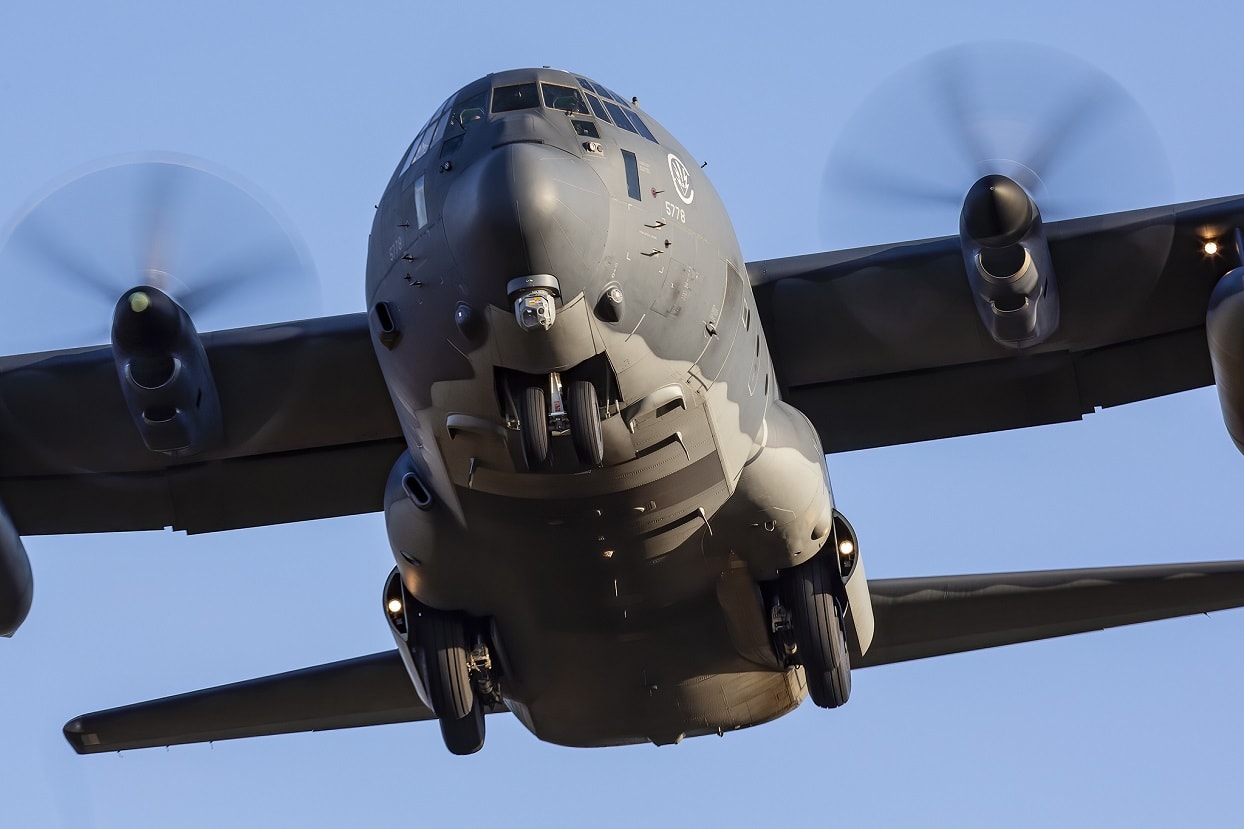The MC-130J Commando II is a special missions aircraft based on the legendary C-130 Hercules, but heavily modified for the rigors of clandestine special operations missions. The Commando II, which first entered service in 2012, has proven its mettle throughout eight subsequent years of covert combat operations, flying in support of missions like Operation Kayla Mueller, which resulted in the death of ISIS leader, Abu Bakr al-Baghdadi.
But with America’s recent re-emphasis on Great Power Competition, the U.S. military is looking to readjust its platforms and doctrine for a potential war with nation-level opponents out of Beijing or Moscow. The past twenty years of war in the Middle East produced many valuable lessons, but now they need to be adjusted to new realities and a completely different operational environment.
By taking a closer look at some recent MC-130J training operations, a picture of how this heavy-payload (but quite secretive) powerhouse plans to stay relevant begins to emerge.
MC-130: The Special Operations plane of choice
With a price tag of about $114 million per aircraft, the approximately 60 MC-130s of the Air Force Special Operations Command (AFSOC) offer a wide range of capabilities to the U.S. Special Operations Command (SOCOM), as well as combatant commanders.
The MC-130J Commando II specializes in air-to-air refueling of special operations helicopters, like those employed by the Army’s elite 160th SOAR. It’s also a master of infiltration and exfiltration, or ferrying special operations troops into and out of the fight under cover of darkness. While troops are in combat, it can resupply special operations units in semi- or non-permissive areas, or provide support for psychological operations by dropping leaflets or broadcasting messages.
“The MC-130 is really such a versatile aircraft that can do a lot of things in the right hands. For instance, we can drop supplies on a team of [Navy] SEALs in the Philippines or land behind enemy lines and evacuate critically wounded troops. It’s a great platform and an essential cog in SOCOM’s arsenal,” A former MC-130 pilot told Sandboxx News.
Currently, SOCOM is experimenting with a hydroplane upgrade for the MC-130, effectively making it a seaplane, so it can operate in maritime environments, such as the South China Sea, wider Indo-Pacific, or the Baltic Sea. But the MC-130’s utility doesn’t end there. With the ability to fly nap-of-the-earth missions and to land on almost any surface, including deserts, beaches, and even highways, the MC-130 is an ideal platform to support expeditionary operations, even in contested airspaces.
Packing it with Rockets
A recent exercise in a strategic Swedish island revealed one of the ways the Pentagon plans to use its MC-130J in a near-peer conflict against China or Russia. During the exercise, an MC-130J Commando II aircraft landed on a highway on the Swedish island of Gotland while transporting an M142 High Mobility Artillery Rocket System (HIMARS).
Further testing the interoperability of the two militaries, a Swedish C-130 aircraft then loaded the HIMARS and took off, transporting it to another part of the country. Following the end of the exercise, the MC-130J reloaded the HIMARS and transported it to Latvia for another similar training operation.
“We have taken further steps in the cooperation with the U.S., where we, with American military transport aircraft, have moved a long-range artillery system to Gotland, reloaded to a Swedish military aircraft for further transport within Sweden,” Brigadier General Anders Löfberg, from the Swedish Special Forces Command, said in a press release.
“The opportunity to act with this and other types of ground or airborne weapon systems together with our partners, I believe removes any doubts about our common ability to be a guarantor of security in the Baltic Sea area.”
Developed in the 1990s for the U.S. Army, the HIMARS is a rocket artillery system that can carry six smaller rockets or one MGM-140 ATACMS missile mounted on a truck frame. The MGM-140 ATACMS is a surface-to-surface missile with a maximum range of 190 miles that can carry a wide variety of warheads, including anti-personnel submunitions.
The MC-130J that transported the HIMARS is assigned to the 67th Special Operations Squadron, 352nd Special Operations Group out of RAF Mildenhall in the United Kingdom, while the HIMARS came from the Wisconsin Army National Guard.
“As we saw with the exercise in Sweden, the aircraft can be a game-changer with its ability to transport deadly weapon systems across a battlefield in relatively short periods of time but under almost any weather conditions,” A former MC-130 pilot told Sandboxx News.
Although Sweden isn’t a member state of NATO, it is very close to the Alliance with frequent joint exercises between the two parties. During the Cold War, it became informally expected that, in the event of a conflict, the U.S. military would aid Sweden. Now, the recent resurgence of Russian aggression in the Baltics is forcing a debate within the Scandinavian country about whether it’s time for Sweden to shed its coat of neutrality and finally join NATO.
Establishing Forward Arming and Refueling Points
In a potential conflict with Russia, an MC-130 could land on a highway somewhere in Poland or in the Baltic States and set up a quick Forward Arming and Refueling Point (FARP) to rearm and refuel U.S. and allied fighter jets and helicopters. Such an impromptu set-up would increase the survival rate and lethality of the NATO aircraft because it would make it harder for the Russians to target them, since they would be operating from an unknown “airfield.”
The U.S. Air Force and AFSOC have already experimented with the concept when MC-130s established a FARP in support of F-22 Raptors during an exercise in Alaska in 2020 during a historic exercise.
Stavros Atlamazoglou is a Greek Army veteran (National service with 575th Marines Battalion and Army HQ). You will usually find him on the top of a mountain admiring the view and wondering how he got there.

